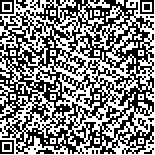| 本文已被:浏览 1777次 下载 922次 |

码上扫一扫! |
|
|
| 基于计算机视觉的头足类角质颚特征研究I:轮廓与特征点提取 |
|
贺芊菡1, 孙翁杰2, 刘必林1,3,4,5,6, 孔祥洪1,4, 林龙山7
|
|
1.上海海洋大学海洋科学学院 上海 201306;2.上海海洋大学信息学院 上海 201306;3.大洋渔业资源可持续开发教育部重点实验室 上海 201306;4.国家远洋渔业工程技术研究中心 上海海洋大学 上海 201306;5.农业农村部大洋渔业开发重点实验室 上海 201306;6.农业农村部大洋渔业资源环境科学观测实验站 上海 201306;7.自然资源部第三海洋研究所 厦门 361005
|
|
| 摘要: |
| 轮廓与特征点研究是头足类角质颚形态特征鉴别的基本方法,对于轮廓与特征点的提取最常用的方法是手动描绘与标定,利用计算机视觉进行轮廓与特征点的提取,不仅可以降低手动提取带来的误差、提高准确性,而且更加快速、便捷。文章将利用计算机视觉提取头足类角质颚的轮廓与特征点,首先将自制装置拍摄得到的角质颚三视图放入MTALAB软件中进行编程处理,然后利用Canny算法提取角质颚轮廓,最后根据地标点的定义标定特征点位置并建立空间坐标系得到角质颚的特征点坐标。研究结果显示,利用计算机视觉提取角质颚的轮廓图像以及特征点坐标是可行的,当标准差σ取值为0.1时角质颚轮廓图效果最佳,在得到的轮廓图上进行特征点的标定,通过迭代遍历轮廓图获得各个特征点的空间坐标。研究分析认为,将计算机视觉应用于头足类角质颚形态学的研究可以提高研究的便捷性,同时也为后续的研究提供了新的实验思路和方法。 |
| 关键词: 角质颚 特征点 计算机视觉 边缘识别 |
| DOI:10.11693/hyhz20200300074 |
| 分类号:Q954;Q959.216;TP399 |
| 基金项目:国家重点研发计划,2019YFD0901404号;国家自然科学基金面上项目,NSFC41876141号;全球变化与海气相互作用专项,GASI-01-EIND-YD01aut/02aut号;上海市“浦江人才”计划项目,18PJ1404100号;上海市高校特聘教授“东方学者”岗位计划项目,0810000243号;上海市科技创新行动计划,19DZ1207502号。 |
附件 |
|
| MORPHOLOGICAL STUDY ON BEAK OF CEPHALOPODS BASED ON COMPUTER VISION I: CONTOUR AND FEATURE POINT EXTRACTION |
|
HE Qian-Han1, SUN Weng-Jie2, LIU Bi-Lin1,3,4,5,6, KONG Xiang-Hong1,4, LIN Long-Shan7
|
|
1.College of Marine Sciences, Shanghai Ocean University, Shanghai 201306, China;2.College of Information Technology, Shanghai Ocean University, Shanghai 201306, China;3.The Key Laboratory of Sustainable Exploitation of Oceanic Fisheries Resources, Ministry of Education, Shanghai 201306, China;4.National Distant-water Fisheries Engineering Research Center, Shanghai Ocean University, Shanghai 201306, China;5.Key Laboratory of Oceanic Fisheries Exploration, Ministry of Agriculture and Rural Affairs, Shanghai 201306, China;6.Scientific Observing and Experimental Station of Oceanic Fishery Resources, Ministry of Agriculture and Rural Affairs, Shanghai 201306, China;7.Third Institute of Oceanography, Ministry of Natural Resources, Xiamen 361005, China
|
| Abstract: |
| Contour and feature points are the basic morphological features of cephalopod beak. The most commonly used method for contour and feature point extraction is manual description and calibration, using computer vision to extract contour and feature points can not only reduce the error caused by manual extraction, improve the accuracy, but also be faster and more convenient. In this study, we used computer vision to extract the contour and feature points of cephalopod beak. First, a self-made device was designed and programmed in MATLAB software, and used for capturing the three-dimensional view of the beak, and then the contour of the beak was extracted in the Canny algorithm. Finally, the feature point position was calibrated according to the definition of landmark, and the feature point coordinates of the beak were obtained by establishing the spatial coordinate system. The research results show that it was feasible to extract the contour image and feature point coordinates of the beak by computer visioning. When the σ value was 0.1, the contour image of beak had the best effect. The feature points were calibrated on the contour picture, and the spatial coordinates of each feature point were obtained by iterating through the contour picture. It was believed that the application of computer vision in the study of beak morphology of cephalopods could improve the accuracy and convenience of the study, and provide new experimental ideas and methods for the follow-up study. |
| Key words: beak feature points computer vision edge recognition |
